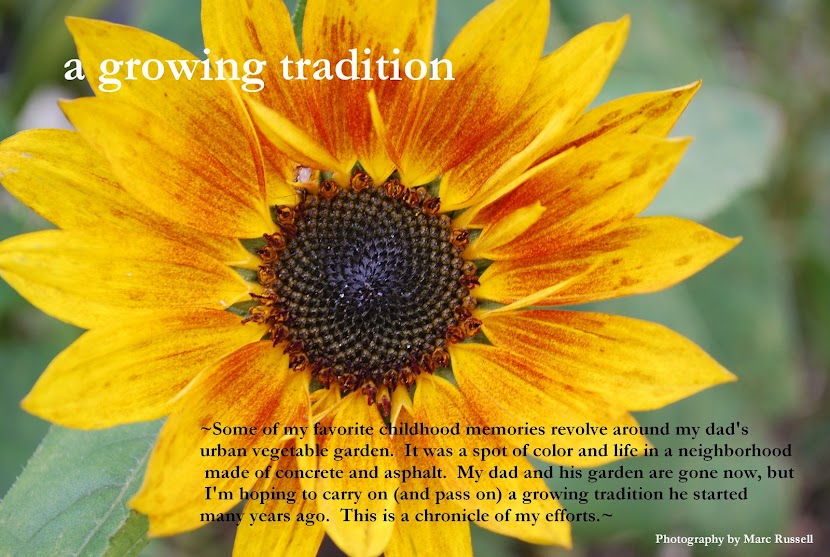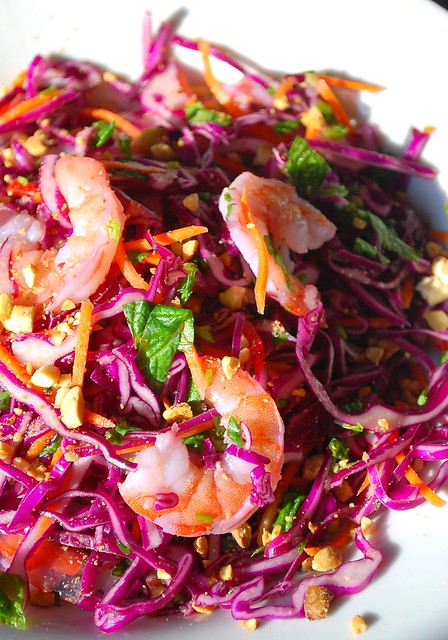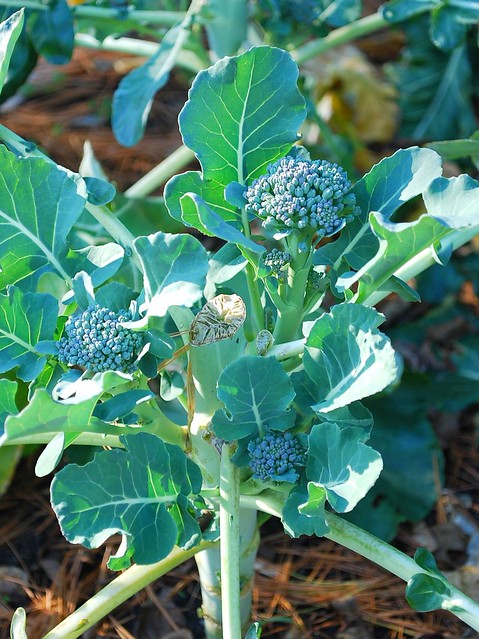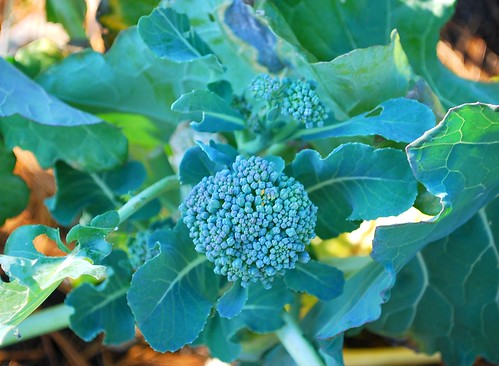- Our lettuce grew bitter way too early, our spring sown spinach and Asian greens did really well. The Napa cabbage was a bust again this year. I don't think I'll be trying again as there are other Asian greens that are much easier to grow. (Note to Self - Kale is your friend, keep eating it. Don't grow Swiss chard again. You will never eat it.)
- Our broccoli did great again and surprisingly, so did our fall cauliflower. (Yes!)
- My beautiful persimmon tree bit the dust this fall. The weight of the snow from our freak October storm snapped the trunk in two. Oh well. It wouldn't have been able to survive our future Vermont winters anyway.
- I didn't get a single fig from my trees purchased in 2010. (Note to self - fig trees LOVE lime! Feed them plenty this spring.)
- Our Imperial Star Artichokes were amazing this year - producing very early and consistently. We'll see if artichokes will grow well as annuals in Zone 4.
- While the field mice, cucumber beetles and slugs continued to be a problem this year, their take was far from devastating. And for the first time, the ground hogs and raccoons have become major players in this game. So long suckers! I hope I don't meet your relatives in Vermont!
- I was finally able to grow a decent crop of string beans this year. I think my earlier problems were due to timing and spacing. (Note to self - sow beans only when the soil is dry and warm and a single row of beans densely seeded and spaced 18 inches from other veggies will yield much better then sowing beans 4 inches apart in all directions.) Also, the soybeans did VERY well this year but I'm not a huge fan of 'Envy'. I think I'll try traditional white butter beans next year.
- The sweet corn was great this year. Ruby Queen is definitely worth growing again. (Note to self - hill up the soil around the stalks when they are 18 inches tall.)
- The melons did just 'ok' again this year. The search for that one perfect homegrown melon continues. (Note to self - grow Hami and Early Silverline melons next year. They are delicious!)
Friday, December 30, 2011
Is it that time already?
I guess it's time to reflect upon this year and plan for the next. All and all, it was a fantastic year for growing veggies. Again we had just enough heat this summer, allowing the warm weather crops (tomatoes, cucumbers and peppers) to thrive like they did in 2010. Another blessing was the rain - I can count on one hand the number of times I had to water the garden. While August and September were unusually wet, the precipitation this year was moderate and consistent. Some other things worth noting this year:
Tuesday, December 27, 2011
Wasted Food
“Taste the Waste“ — the trailer from tastethewaste.com on Vimeo.
It's always shocking to see huge quantities of food going to waste.Monday, December 19, 2011
A Peek At What's To Come

So I'm happy to say that we've found a new place to live - well at least for the next 18 months. It didn't take us very long, which is nice considering several folks have warned us of how difficult it can be to find decent housing in Burlington, Vermont this time of year. Like other college towns, most rental units in Burlington come onto the market during the summer months when the vast majority of students are looking for housing. In our case, we were lucky that the present occupants of our future home had to break their lease. When we entered the front doors, Marc and I looked at each other and we both knew instantly that we were destined to live here.
I have to give Marc all of the credit for finding this gem. It was by far the best place we'd seen on Craigslist. Interestingly, it is located in a cohousing development in Burlington. What is 'cohousing' you might ask? Well, you can learn more about it here. I will admit that the concept of cohousing is something new to me. (In my mind, I was picturing a 60's style commune.) But the more I read about it, the more confident I am that it will be a very good fit for us. I'm looking forward to living and on occasion breaking bread with other families who share similar values and interests.
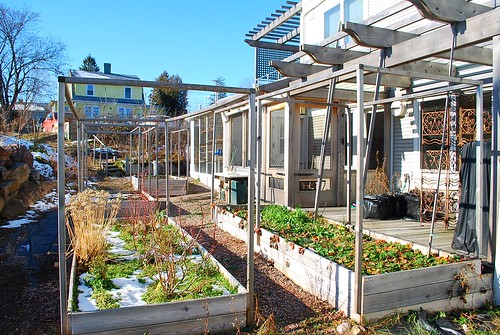
This particular co-housing development is situated on 4 acres, was built using green materials and designed for energy efficiency. There are also solar panels on the roof of this unit. According to the property manager, the owner intended to spend the rest of her life here and as such made extensive upgrades to the interior and exterior of the home. Sadly, she had to relocate a couple of years ago. (We assume the reason was health-related.) She was an avid gardener and had installed four large raised beds in the back and two rain barrels on the side of the house. There's also a small composter. Around the unit she planted strawberries, blueberries, raspberries, cranberries, blackberries and several fruit trees.
The exterior space could be considered tiny in comparison the the half-acre we currently have, but this just means that I'll have to be much more creative in utilizing the limited space available for growing food. I'm actually looking forward to the challenge as I've long had an interest in urban vegetable gardens. Besides, the way I see it, urban farms may one day be the norm and and not the novel.
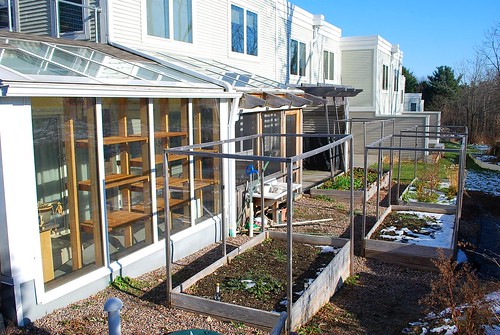
I'm looking forward to planting in these beds this upcoming spring. From what we've been told, they've remained unused for the past couple of years. I'm sure the owner will appreciate the fact that they're being put to good use again. (Maybe I'll have the property manager send her some pictures this summer.) I will try to grow more vegetables in pots as well, although up until now, I haven't had much success with this. The development also has a small common garden but space appears to be extremely limited. There are several community gardens nearby so I'm hoping to get a plot elsewhere.
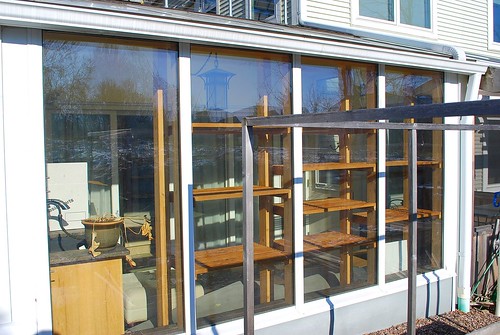
My favorite feature of this home is most definitely the glass conservatory. Since it's an addition to the home, it's also heated. The room has a sink, work surface, adjustable shelves and a drain built into the floor for easy cleanup. It also has a fan and remote controlled shades installed in the event it gets too hot during the daytime. I can't wait to start sowing seeds in there. I'm certain my citrus plants will appreciate the space has well.
In addition to all of these things, the unit also has one of the most beautiful kitchens I've ever been in. As you can imagine, I'm feeling much better about the move (which is in three weeks) now that we've secured a place to live. I'm just happy that I'll be gardening again next year!
Saturday, December 17, 2011
Saving Strawberry Crowns
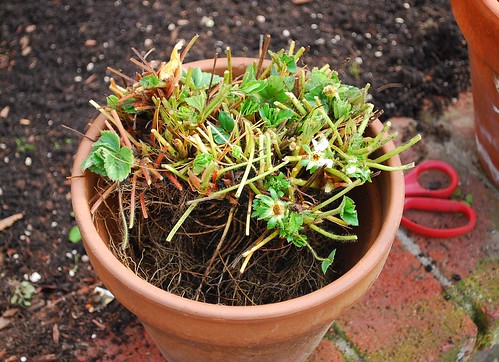
This past spring, I purchased a couple dozen Seascape strawberry crowns for the garden. Of course at the time, I had no idea that we would be moving 9 months later. Half of the plants where transplants into one of my raised beds and the rest were grown in pots. This past weekend, I decided to dig up the latter to take with us. Hopefully the future (currently unknown) owners of our home will enjoy the ones in the garden.
I bundled these up in some potting soil for the winter and am crossing my fingers that I'll have a place to transplant them this upcoming spring.
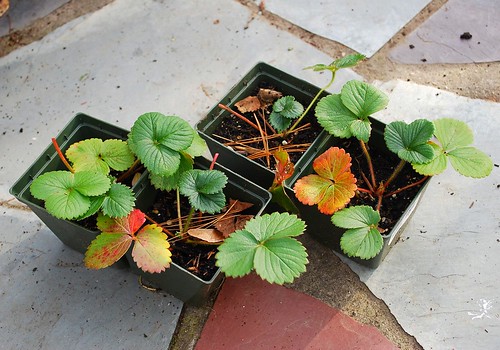
My plants didn't produce many runners this year but I did pot up these four. I'll take these with me as well.
Regarding other perennials that are still in the garden, my beautiful raspberries and cranberries will have to stay behind. However, if the house doesn't sell by late winter, I might take some raspberry cuttings and try to root them. My potted fig trees are coming with us and I think I'll dig up my one rhubarb plant this weekend. The crown is 2 years old and I haven't been able to harvest from it yet. As I far as my asparagus plants are concerned, they will have to stay, which is a shame since I planted them in the spring of 2010 and by this spring, we most likely would have gotten a decent crop. Oh well.
What would you do? Would you leave your edible perennials behind try to take as many of them as your can with you?
Tuesday, December 13, 2011
Where Life Takes You...
I guess I should break the news - We're moving.
Though I'm still getting used to the idea, it seems certain now that we'll soon say goodbye to the garden I'd started less than three years ago. Though it's extremely sad, in the back of my mind, I've long considered gardens to be temporary things. Years ago, I remember returning to one of my childhood homes, now located in a particularly dilapidated section of Philadelphia, to find that my dad's once beautiful garden had been reduced to bare earth, weeds and broken concrete. Though I'm hoping that the future owners of our home will choose to keep the garden and that it will bring them as much joy as it has brought me, I won't be too devastated if the space is eventually returned to lawn. In a way, it's strangely comforting to know that at least for a brief time, this particular patch of earth was worked and productive.
So where to now? Marc, Jonathan and I are relocating to Burlington, Vermont in January. Marc has a great job waiting for him there and my employer is letting me work part of the time from home. I'll still be commuting several times a month to Boston. We plan on renting for at least the next couple of years so I'm hoping to get a plot at one of the city's community gardens. Hopefully there won't be a long waiting list and I'll get to meet other avid veggie gardeners in the area.
In many ways, I'm excited about the move. Burlington, Vermont has long been a place that has embraced small farms and the local food movement. I'm also looking forward to exploring the surrounding towns and of course Canada. Burlington is only 40 minutes away from the Canadian border by car and I've heard that Montreal (an hour and a half away) is a great city to visit. My only reservation is that I'll be loosing about a month of gardening time since Burlington and most of state lies within climate zone 4. I also doubt that I'll be doing much winter gardening in Vermont. But this seems minor in comparison to all of the wonderful new things we'll get to experience.
Whether we'll decide to settle in Vermont permanently or return to Massachusetts after a couple of years, in the end, I think this will be great adventure for us. I hope you all will keep reading and come along for the ride!
Though I'm still getting used to the idea, it seems certain now that we'll soon say goodbye to the garden I'd started less than three years ago. Though it's extremely sad, in the back of my mind, I've long considered gardens to be temporary things. Years ago, I remember returning to one of my childhood homes, now located in a particularly dilapidated section of Philadelphia, to find that my dad's once beautiful garden had been reduced to bare earth, weeds and broken concrete. Though I'm hoping that the future owners of our home will choose to keep the garden and that it will bring them as much joy as it has brought me, I won't be too devastated if the space is eventually returned to lawn. In a way, it's strangely comforting to know that at least for a brief time, this particular patch of earth was worked and productive.
So where to now? Marc, Jonathan and I are relocating to Burlington, Vermont in January. Marc has a great job waiting for him there and my employer is letting me work part of the time from home. I'll still be commuting several times a month to Boston. We plan on renting for at least the next couple of years so I'm hoping to get a plot at one of the city's community gardens. Hopefully there won't be a long waiting list and I'll get to meet other avid veggie gardeners in the area.
In many ways, I'm excited about the move. Burlington, Vermont has long been a place that has embraced small farms and the local food movement. I'm also looking forward to exploring the surrounding towns and of course Canada. Burlington is only 40 minutes away from the Canadian border by car and I've heard that Montreal (an hour and a half away) is a great city to visit. My only reservation is that I'll be loosing about a month of gardening time since Burlington and most of state lies within climate zone 4. I also doubt that I'll be doing much winter gardening in Vermont. But this seems minor in comparison to all of the wonderful new things we'll get to experience.
Whether we'll decide to settle in Vermont permanently or return to Massachusetts after a couple of years, in the end, I think this will be great adventure for us. I hope you all will keep reading and come along for the ride!
Sunday, December 11, 2011
A December Harvest

I decided to pick my Brussels sprouts today. They've been sitting in the garden for the past eight months, but at this point, I think they're done growing. Today was especially cold and the garden remained frosty for much of the day. I figured that if I didn't pick them today, I never would.
As you can see, I have a lot to learn about growing Brussels sprouts. They look pretty leggy, not anything like the compact robust stalks you see at the supermarket. The ones at the bottom are pretty ratty looking (I guess I should have picked these a long time ago) but the rest are fine.

These sprouts are definitely on the small side, yet large enough to be worth keeping. Maybe next year I'll get it right.
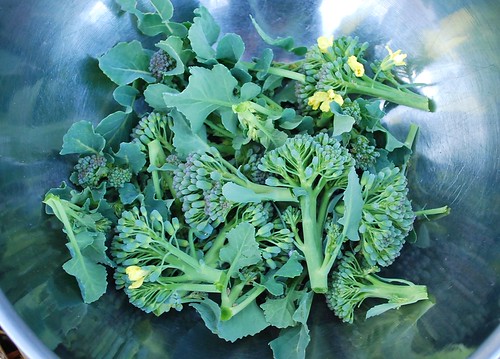
Finally, I picked the last of this year's broccoli. There wasn't much but it'll still be good in a stir-fry alongside other veggies.
Saturday, December 10, 2011
December Citrus Blossoms

It happens like clockwork each year. My Meyer lemon tree is blooming again. If all goes well, these will develop into lemons, 1 to 3 per cluster, and be ready for picking next fall.
The lemons on my new tree are taking a little longer than expected to ripen. They should be ready in about a week - just in time to make marmalade for the holidays.
Thursday, December 8, 2011
In the Kitchen - Vietnamese Red Cabbage Salad Recipe

It's been a while since I've posted an traditional Asian recipe. I was looking through my photos and realized that I had quite a few to post. At the moment, I'm addicted to this salad. Especially during this time of year, when every holiday dish seems to call for butter and cream, it's nice to have a meal that's light yet satisfying.
I have memories of eating this Vietnamese red cabbage salad when I was a child. It was often served during the holidays and at our Sunday family gatherings. Having not had it in years, I'd almost forgotten how good it is.
I'm not fan of the coleslaw at all and the copious amount of mayonnaise that's often involved. With a ton of herbs and little to no oil, this salad is at the opposite end of the spectrum.
Vietnamese Red Cabbage Salad Recipe
(about 4 servings)
Salad Ingredients:
16 medium raw shrimp
1 pound of red cabbage, sliced thin (about half of a large head)
1 large carrot, finely julienned
1/4 cup chopped scallions
1/4 cup chopped cilantro
1/4 cup chopped mint
2 tablespoons freshly toasted peanuts, finely chopped
Dressing:
1 fresh cayenne chili, finely chopped
1 fresh bird's eye chili, finely chopped
6 tablespoons unseasoned rice vinegar (or plain white vinegar)
2 tablespoons fish sauce
2 teaspoons sugar
1/4 teaspoon kosher salt
In a small bowl, combine all of the ingredients for the dressing and stir until the sugar and salt are dissolved.
Boil the shrimp in water for about 2 minutes or until they are pink and just cooked through. Drain and run them under cold water to stop the cooking process. Once cool to the touch, peel and slice each of them lengthwise.
Place the shrimp in a large bowl. Add the salad ingredients except for the peanuts and toss to combine.
Ten minutes before serving, pour the dressing over the salad and toss thoroughly. Let it sit for 10 - 15 minutes in the fridge. The cabbage will soften and wilt slightly during this period. Give it one final toss before serving. Garnish with the peanuts.
Tips and Variations:
The brand of fish sauce I prefer is called 'Three Crabs', which you can find at most Asian markets. Or you can use light soy sauce in place of the fish sauce and add 1/2 teaspoon dark sesame oil. I usually toast my peanuts in a toaster oven. Or you can toast them in a pan on medium heat until they are brown. You can omit the shrimp entirely or substitute one large boneless skinless chicken breast, poached and shredded. This salad (sans shrimp) also goes well with grilled meat or seafood. You can also use green cabbage and 1/4 cup of thinly sliced red onion in place of the red cabbage and scallions. I thinly slice the cabbage and julienne the carrot using a Japanese mandoline. Adding some Thai basil to this salad would be delicious as well.
Tuesday, December 6, 2011
The December Garden
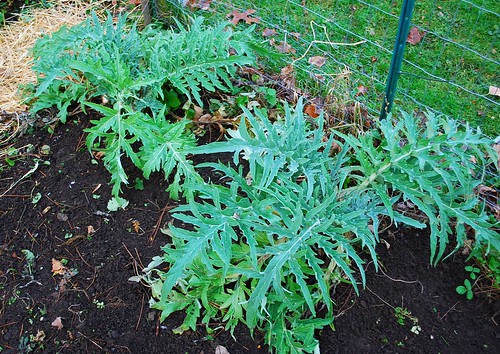
I noticed the other day how well my Imperial Star Artichokes were still doing, which is in stark contrast to how they looked this time last year. Maybe this has something to do with the fact that I'd side-dressed the plants with compost and organic fertilizer in August after they'd stopped producing.
Temperatures are expected to dip down to 26 degree F later in the weeks so I have a feeling they will fade fast soon after. In any case, I'm hopeful that they will overwinter in the garden this year. I guess we'll just have to wait and see.

Even if they don't overwinter successfully, it's definitely worthwhile to grow artichokes as annuals in our climate. I got an especially good crop of artichokes from my seven plants this year. Aside from the tasty flower buds, the plant's leaves are very decorative in my opinion and would add a lot of eye candy to any garden.
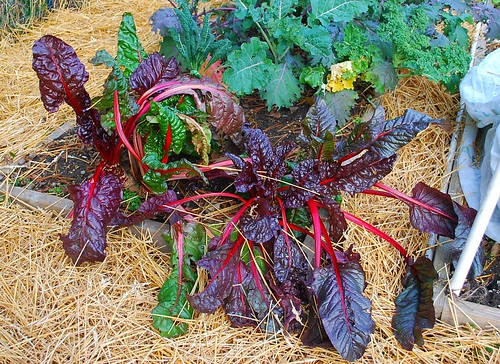
My Rhubarb Chard is hanging in there. The leaves have turned a deep burgundy color. Too bad I'm not a fan of this vegetable.
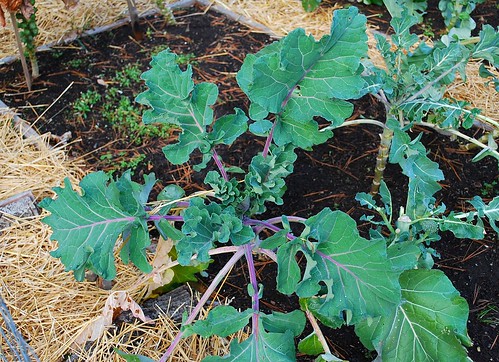
Even though they don't produce florets in their first year, my purple sprouting broccoli plants seem hardier than my fall broccoli. I'll cover them with fabric grow cover and see if they come back next spring. I have no idea whether or not they'll overwinter successfully in our Zone 6 climate.
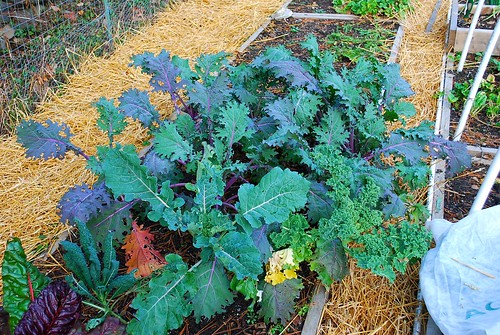
Finally, the kale still looks virtually unfazed by the cold weather. You can tell that the nighttime temperatures are approaching freezing when the Red Russian kale takes on a purplish hue.
Sunday, December 4, 2011
December Broccoli
Friday, December 2, 2011
Yes! It's Friday!
It's nice to celebrate the end of a long work week with a good belly laugh. This video had me rolling this morning (and left me somewhat speechless)! See for yourself.
Thursday, December 1, 2011
In the Kitchen - Rustic Pear Tart

Last week, I made several desserts for our Thanksgiving dinner, including a pineapple upside down cake, my autumn fruit pie and a cherry pie made from sour cherries that I'd purchased back in July and froze specifically for this occasion. After assembling the pies and trimming the edges, I had enough dough left over for a 9 inch tart shell. This past weekend, I decided to make a rustic tart using some ripe Bartlett pears.
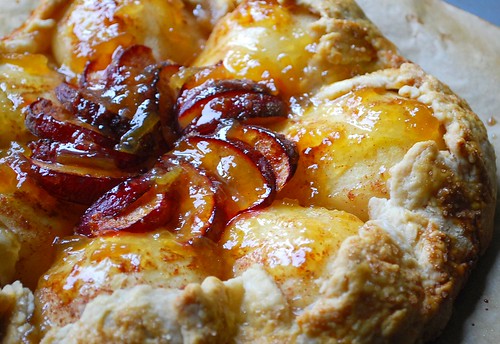
I love making these 'free-formed' or rustic-looking fruit tarts because 1) they take much less time to prepare than your average pie 2) they usually don't require as much sugar as your average fruit pie recipe and 3) you can get pretty creative with the filling. I started by pealing, halving and coring my four pears and rolling my dough into a round 13 - 14 in diameter. I laid 7 of the halves into a circular pattern on top of the round. I then cut the last half into 1/2 inch cubes and added them to the center of the pear halves. I also had a red plum lying around so I decided to cut it into thin slices and arrange them on top the pear cubes.
On top of the pears, I sprinkled some ground ginger, cinnamon and the tiniest bit of clove. I then drizzled about a tablespoon of honey and two tablespoons of light brown sugar. After folding the edges up, I brushed the dough with some egg and sprinkled some raw sugar on it. The tart went into a preheated 425 degree F oven for about 15 minutes and then continued to bake at 375 for another 30-40 minutes.
When the tart is still warm, I like to glaze the fruit with some preserves (in this case, Meyer lemon marmalade) before serving. In the end, this was probably one of the tastiest improvised desserts I've made in a long time.
Subscribe to:
Comments (Atom)
